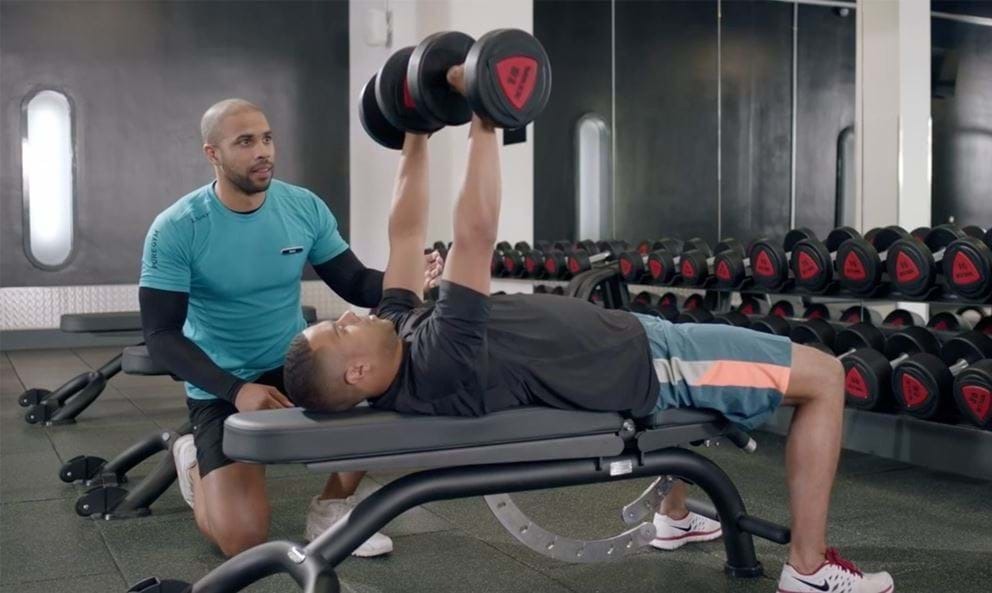When someone steps into the gym for the first time, the most common goal is to “get stronger.” But strength is not built overnight. Many beginners push too hard, lift too heavy, or follow random routines from the internet, which often leads to injuries or burnout.
The truth is: building strength is a process. It requires proper technique, gradual progress, and balance between workouts, rest, and nutrition. The good news? You don’t need to be an athlete or bodybuilder to get strong. With the right steps, even a complete beginner can improve strength safely and see results in just a few weeks.
In this guide, we’ll explore how beginners can build strength quickly without risking injury.
Why Building Strength Matters for Beginners
Strength is not just about lifting heavy weights. It’s about making your everyday life easier and improving overall health.
Here are a few reasons why strength training is important:
- Better daily function – carrying groceries, climbing stairs, or lifting objects becomes easier.
- Boosts metabolism – muscles burn calories even when you are resting.
- Protects joints and bones – reduces the risk of injuries and osteoporosis.
- Improves posture – strong core and back muscles prevent slouching.
- Builds confidence – being stronger makes you feel more capable.
Step 1: Learn Proper Form Before Adding Weight
One of the biggest mistakes beginners make is rushing to lift heavy weights without learning the right technique. This not only slows progress but also increases the risk of injuries.
Tips to master form:
- Use light weights or bodyweight in the beginning.
- Watch your posture: keep your back straight, shoulders back, and core tight.
- Focus on slow, controlled movements rather than rushing through reps.
- Ask a trainer or experienced friend to check your form.
- Record yourself while exercising to notice mistakes.
Pro tip: Always aim for quality over quantity. Ten perfect squats are better than thirty sloppy ones.
Step 2: Start with Compound Exercises
Compound exercises use multiple muscles at the same time, helping you build strength faster. They give you the most results in the shortest time.
Here are the best compound moves for beginners:
- Squats – strengthen legs, glutes, and core.
- Push-ups – build chest, shoulders, and arms.
- Deadlifts (with light weights first) – improve back, glutes, and hamstrings.
- Pull-ups (or assisted pull-ups) – work the upper body and core.
- Bench Press (with dumbbells or barbell) – builds chest and triceps.
Aim for 2–3 sets of 8–12 reps for each exercise.
Step 3: Follow Progressive Overload
Your body adapts quickly, so you need to challenge it regularly. This principle is called progressive overload.
Ways to apply progressive overload:
- Add more weight gradually (even 1–2 kg makes a difference).
- Increase the number of reps or sets.
- Reduce rest time between sets.
- Slow down the movement for extra control.
For beginners, it’s best to add small progress weekly instead of jumping too fast.
Step 4: Balance Strength Training with Rest
Muscles don’t grow while you’re lifting weights. They grow when you rest. Beginners often make the mistake of training every single day, which leads to fatigue and no results.
Beginner strength plan example:
- Day 1: Full body workout
- Day 2: Rest or light cardio
- Day 3: Full body workout
- Day 4: Rest or stretching
- Day 5: Full body workout
- Day 6: Cardio or yoga
- Day 7: Rest
This way, you train 3 times a week while giving your body time to recover.
Step 5: Support Your Training with Nutrition
If you want to build strength, you must fuel your body correctly. Without proper nutrition, workouts won’t give the best results.
Beginner nutrition tips for strength building:
- Eat enough protein – chicken, fish, eggs, lentils, beans.
- Add complex carbs – oats, brown rice, sweet potatoes for energy.
- Healthy fats – nuts, olive oil, avocado for recovery.
- Stay hydrated – drink 2–3 liters of water daily.
- Avoid junk food and sugary drinks.
Simple rule: Eat clean and eat enough to support muscle growth.
Step 6: Mix Strength with Core and Mobility Work
A strong body is not only about big muscles. Stability and flexibility are equally important. Beginners should focus on:
- Core exercises (plank, bicycle crunches, side planks).
- Mobility drills (hip openers, shoulder stretches).
- Foam rolling to reduce soreness.
This helps prevent injuries and improves overall performance in strength training.
Step 7: Track Progress and Stay Consistent
Tracking helps beginners stay motivated. Write down:
- What exercises you did
- How many reps/sets
- What weight you used
When you look back after 6–8 weeks, you’ll see how much stronger you’ve become.
Common Mistakes Beginners Should Avoid
- Lifting too heavy too soon – causes injuries.
- Skipping warm-ups – cold muscles are more likely to get hurt.
- Poor posture – slouching or arching your back incorrectly.
- Neglecting rest – overtraining slows progress.
- Comparing with others – focus on your own journey.
Sample Beginner Strength Workout Plan (3 Days per Week)
Day 1 – Lower Body & Core
- Squats – 3 sets of 10 reps
- Glute bridges – 3 sets of 12 reps
- Step-ups – 3 sets of 10 reps each leg
- Plank – 20–30 seconds hold
Day 2 – Upper Body
- Push-ups – 3 sets of 8–10 reps
- Dumbbell rows – 3 sets of 10 reps
- Overhead shoulder press – 3 sets of 12 reps
- Side planks – 15 seconds each side
Day 3 – Full Body Strength
- Deadlifts (light) – 3 sets of 8 reps
- Lunges – 3 sets of 10 reps each leg
- Bench press (light dumbbells) – 3 sets of 10 reps
- Bicycle crunches – 3 sets of 15 reps
This plan is safe, simple, and effective for beginners.
Extra Tips to Build Strength Faster
- Sleep 7–8 hours daily – muscles recover while you sleep.
- Stay consistent – strength comes from routine.
- Use lighter weights longer if form isn’t perfect.
- Stretch after workouts to avoid stiffness.
- Stay patient – strength takes weeks, not days.
Conclusion
Building strength as a beginner is not about lifting the heaviest weights or training every day. It’s about learning the right form, starting with simple compound movements, eating well, and staying consistent. By following a step-by-step approach, you can gain strength safely and quickly without injuries.
Remember: the first few weeks are about building habits, not chasing big numbers. Stay patient, focus on progress, and you’ll be surprised at how strong you become in just a short time.



